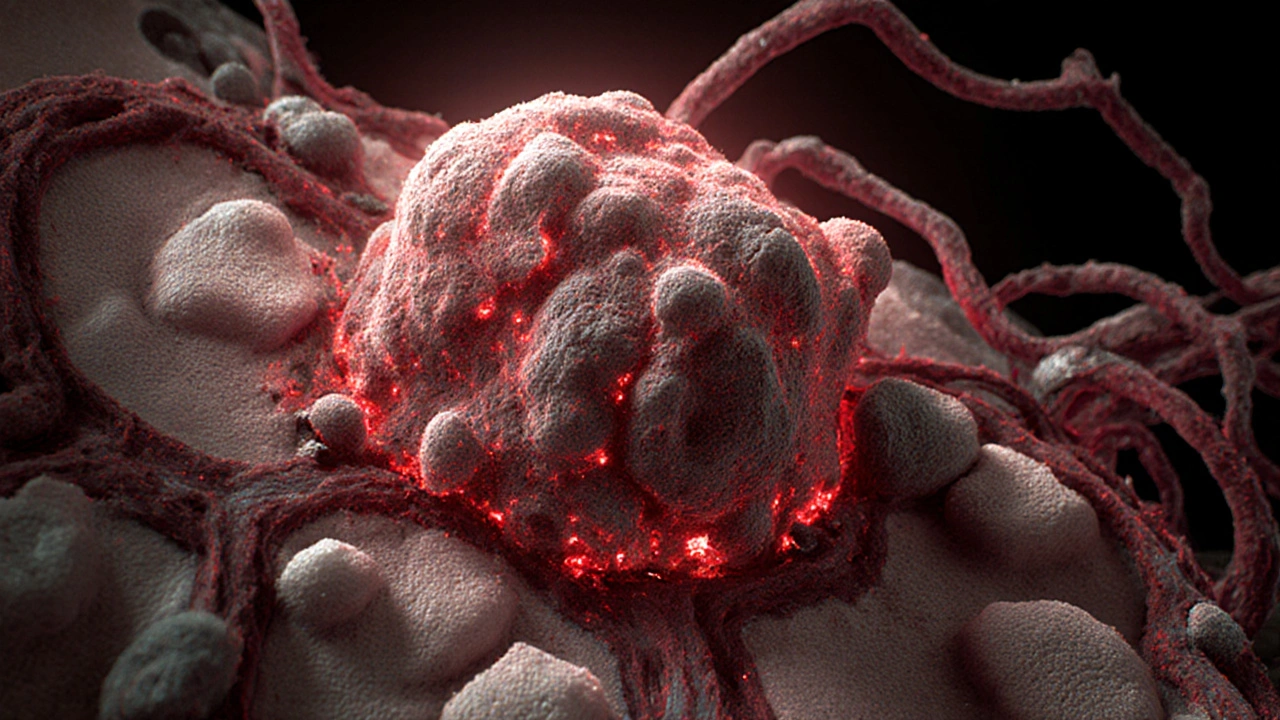Understanding Tumor Growth
When exploring tumor growth, the process where abnormal cells multiply and expand within a tissue. Also known as neoplastic expansion, it cancer, a group of diseases characterized by uncontrolled cell division that often relies on angiogenesis, the formation of new blood vessels to supply nutrients to growing tissue. The tumor microenvironment, the surrounding cells, blood vessels, and signaling molecules that interact with tumor cells also shapes how fast and how far the growth spreads. In short, tumor growth is a complex dance of cell proliferation, blood‑vessel recruitment, and environmental cues that can lead to metastasis, the spread of cancer cells to distant organs if left unchecked.
Key Factors Driving Tumor Growth
First, cell proliferation provides the raw numbers. Mutations in genes like TP53 or KRAS remove the brakes on the cell cycle, letting cells divide faster than normal. Second, angiogenesis supplies the oxygen and nutrients that a growing mass needs; without new vessels, a tumor stalls at a few millimeters. Third, the tumor microenvironment can either hinder or help. Immune cells, fibroblasts, and extracellular matrix components release growth factors that boost expansion, while certain immune responses can slow it down. Finally, metabolic reprogramming—shifting to glycolysis even when oxygen is present—feeds the energy demand of rapidly dividing cells.
These elements don’t act in isolation. For example, hypoxia (low oxygen) within a tumor triggers the release of VEGF, a protein that drives angiogenesis. The new vessels then deliver more oxygen, allowing more cells to proliferate—a clear cause‑and‑effect chain. Likewise, inflammatory signals from surrounding stromal cells can activate pathways that increase both proliferation and invasion, setting the stage for metastasis.
Understanding these connections helps clinicians choose targeted therapies. Anti‑angiogenic drugs like bevacizumab aim to choke off the blood supply, while kinase inhibitors block proliferative signals. Immunotherapies attempt to reshape the microenvironment so the body’s own defenses can attack the tumor. Each approach targets a different node in the tumor‑growth network.
For patients, knowing the drivers of tumor growth can inform lifestyle choices that support treatment. Maintaining a balanced diet, staying physically active, and managing stress can modestly influence hormone levels and inflammation, which in turn affect the tumor microenvironment. While these habits won’t replace medical therapy, they add a layer of support that can improve overall outcomes.
Below you’ll find a curated set of articles that dive deeper into each of these aspects—dietary tips for managing growth, the latest on anti‑angiogenic therapies, how the immune system interacts with tumors, and practical guides on dealing with side effects of cancer drugs. Whether you’re a patient looking for actionable advice or a caregiver seeking a clearer picture, the collection offers real‑world insights that complement the science outlined here.
Understanding Tumor Growth and Cancer Stages
Explore how tumor growth drives cancer progression, learn the TNM staging system, and discover what each stage means for treatment and survival.
Read more
